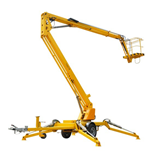Back in February 2010, David Rumbens, director of Access Economics, referred to the "patchwork boom" dominated by big mining projects that lay ahead for investment in Australia.
But it was not until October that year that Prime Minister Julia Gillard referred to the "patchwork economy", and not until February 2011, in the lead-up to the May 10 budget - when it was mentioned in Treasurer Wayne Swan's introductory speech - that it was heard from the government with any regularity.
Why the government's strategists think the term might make anyone feel better about the economy, or the government's management of it, is anyone's guess.
In any case, the flow of economic data since then has confirmed that the description is an accurate one, with wide divergences in economic performance between states, cities, industries and professions.
The evidence continued to pile up on Monday.
Perhaps the most stark was the estimate of sales of new homes from the Housing Industry Association, based on a survey of major home builders.
It's well known that housing is one of the patches that look a little threadbare and the HIA - JELD-WEN report backed that up.
A seasonally adjusted total of 6,428 new homes were sold in July.
It was the lowest since January 2000, more than 11 years ago, and 17 per cent below the average for the five years to June.
The figures were a reminder that the patchwork economy does not just distinguish between mining-boom states and the rest, but also cuts into the sectors within those boom states.
Western Australia's total for sales of new houses - the HIA does not give state breakdowns for other dwelling types - was just 818, also the lowest since 2000, but barely two-thirds of the average for the latest five years.
It's not just housing, either.
Manufacturing is doing it tough.
Hot on the heels of BlueScope Steel's layoffs announced last week, credit agency Dun and Bradstreet has produced analysis pointing to a likely rise over the coming year in the proportion of manufacturing firms having trouble paying their bills within 90 days.
The estimate for the manufacturing sector now stands at 14 per cent as at June, up from 12.7 per cent three months earlier.
In contrast, the estimate of so-called "severely delinquent behaviour" among non-manufacturing firms rose only fractionally, to 10.8 per cent from 10.6 per cent.
In other words, things are getting worse in manufacturing about five times faster than in the rest of the economy, not surprisingly given the sky-high exchange rate and the weakness in housing, a major driver of domestic manufacturing.
Dun and Bradstreet also estimates the number of business startups and failures.
In 2008, there were 974 startups and 392 failures in manufacturing.
Two years later in 2010, after the global crisis, there were 491 startups and 739 failures.
So far in 2011, failures are running at about the same rate as in 2010, 279 in the year to date, or 47 per month compared with 52 in 2010.
But potential entrepreneurs in the sector have seen the writing on the wall.
Only 14 startups had been recorded by the mid-point of the year.
If the second half of the year is a repeat performance, that will mean a 97 per cent slump in manufacturing business startups compared with 2008.
And that's about as patchy as it gets.





-160x160-state_article-rel-cat.png)





-160x160-state_article-rel-cat.png)











